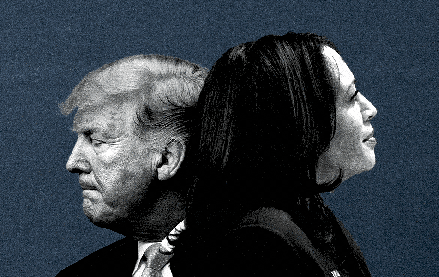Confessions of an influencer agency exec on micro-influencers: ‘It’s all going to implode’

This article is part of our Confessions series, in which we trade anonymity for candor to get an unvarnished look at the people, processes and problems inside the industry. More from the series →
Micro-influencers are having a moment in the spotlight, as focus shifts from big-name (and big-cost) social media influencers.
A recent survey of 2,500 micro-influencers by Bloglovin’ found 84 percent of small-scale influencers charge under $250 for a branded post on Instagram. By contrast, the same post would set brands back $75,000 on an Instagram channel with an audience in the low millions. And with engagement floundering among higher follower counts, brands like Nestlé and Neutrogena have been wooed with the prospect of reaching a more engaged audience for less money.
But not everyone agrees that good things come in small packages. As part of our ongoing Confessions series, where we grant anonymity in exchange for honesty, we spoke to an Instagram influencer agency exec who believes micro-influencers are a “bubble” waiting to burst.
Excerpts lightly edited for clarity.
How do you define a micro-influencer?
For me, it’s less to do with audience size but about attitude. I’m talking about when “micro” is perceived as any individual with a following who wants to take a brand’s money but has no ambitions to make this their livelihood. There are influencer platforms out there trying to get every random Joe to post shit for brands to their friendship group and get paid. I’ve seen people with as little as 100 followers on there. Genuinely good creators make up a single-figure percentage in this group of normal people who don’t have a place advertising content. They are taking a selfie that takes 10 seconds thinking, ‘Yeah, I’ll take money to promote this product.’
Isn’t the idea that it’s more authentic?
I really feel like micro-influencers are a step backwards. You can influence your friend group, sure. I don’t follow my friends on Instagram to plug products; I follow bloggers. If they are a micro-influencer, their content isn’t super duper because if it was they’d have a bigger audience. There’s a lot of people out there who are just being paid to promote any old product.
Lots of companies tout micro-influencers as effective.
It all comes down to how you measure it. Paying someone £50 ($63) to reach an audience of 100 seems cheap. But it doesn’t mean it’s right for the brand or their audience. It’s sexy to think that everyday consumers can make money promoting products, but they know even less about the rules here.
Where do you see this headed?
When we first started out, influencers would ask for £5,000 ($6,300) and end up doing a deal for £300 ($380). No one knew how to price anything. Micro-influencers are an example of this; it’s another Wild West. Soon there will come a point where this bubble of people being paid for product placement will burst. It’s all going to implode. It’s already happened on Facebook. Organic reach will get crushed, and those who post bad content won’t be valuable to brands. It will be the real creators who have the longevity.
You mentioned bad content. What other problems do you see here?
Inflating follower counts is still a large problem because when there hasn’t been structure in place, why wouldn’t you do it? In our background checks, we see this in around 10 percent of applicants. But because we go after creative people, they are probably less into it for selling an audience.
Do brands still care about follower counts?
They are learning now that followers count for fuck-all. Engagement is harder to fake. If it’s less than 1 percent of their follower count, then you need to question where the followers come from. That’s why you need to look at the quality of the content. People are still too focused on that number, and that number can be manipulated. There’s a professional photographer I know with over 1 million followers and 1 percent engagement. Even from a glance, it’s obvious — because there aren’t any comments on their posts. I know they’ve collaborated with brands too.
What should they focus on instead?
As the space has grown up, there are more professional influencers who consider themselves a brand in their own right. They are careful about their work and are doing creative partnerships that mean something — almost like a consultant for their audience group. The good stuff is getting better and will rise to the top, but there’s a lot of bullshit too. You can’t lay that on influencers; it’s on brands to know what they should be asking for. If they are stupid enough to pay stupid money, then they deserve not to get value.
More in Marketing

Hyve Group buys the Possible conference, and will add a meeting element to it in the future
Hyve Group, which owns such events as ShopTalk and FinTech Meetup, has agreed to purchase Beyond Ordinary Events, the organizing body behind Possible.

Agencies and marketers point to TikTok in the running to win ‘first real social Olympics’
The video platform is a crucial part of paid social plans this summer, say advertisers and agency execs.

Where Kamala Harris and Donald Trump stand on big tech issues
The next U.S. president is going to have a tough job of reining in social media companies’ dominance and power enough to satisfy lawmakers and users, while still encouraging free speech, privacy and innovation.





